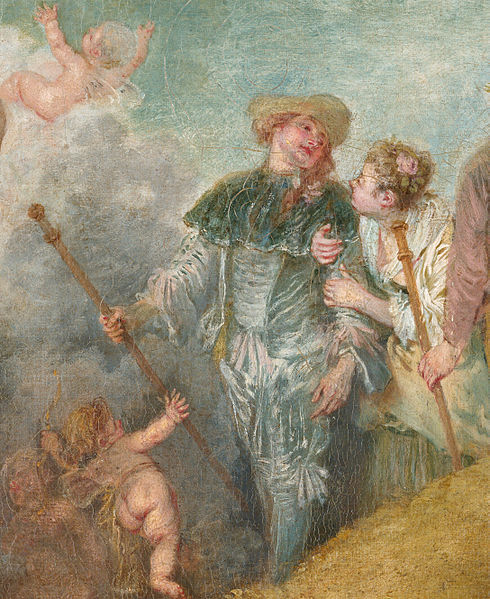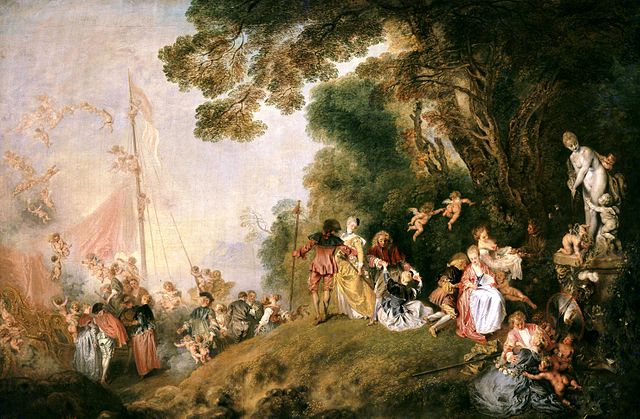The Embarkation for Cythera
The Embarkation for Cythera is a painting by the French painter Jean-Antoine Watteau.
The Embarkation for Cythera
The Embarkation for Cythera (Louvre version): Many commentators note that it depicts a departure from the island of Cythera, the birthplace of Venus, thus symbolizing the temporary nature of human happiness.
Pilgrimage to Cythera is an embellished repetition of Watteau's earlier painting, and demonstrates the frivolity and sensuousness of Rococo painting. (c. 1718-19, Berlin)
The early version in Frankfurt, 1709-10
Jean-Antoine Watteau was a French painter and draughtsman whose brief career spurred the revival of interest in colour and movement, as seen in the tradition of Correggio and Rubens. He revitalized the waning Baroque style, shifting it to the less severe, more naturalistic, less formally classical, Rococo. Watteau is credited with inventing the genre of fêtes galantes, scenes of bucolic and idyllic charm, suffused with a theatrical air. Some of his best known subjects were drawn from the world of Italian comedy and ballet.
Rosalba Carriera, Portrait of Antoine Watteau, c. 1721, showing the artist in the last year of his life. Musei Civici [it], Treviso
Pleasures of Love (1718–1719)
The Feast (or Festival) of Love (1718–1719)
The Embarkation for Cythera, 1717, Louvre. Many commentators note that it depicts a departure from the island of Cythera, the birthplace of Venus, thus symbolizing the brevity of love.





![Rosalba Carriera, Portrait of Antoine Watteau, c. 1721, showing the artist in the last year of his life. Musei Civici [it], Treviso](https://upload.wikimedia.org/wikipedia/commons/thumb/0/0b/Rosalba_Carriera_Portrait_Antoine_Watteau.jpg/443px-Rosalba_Carriera_Portrait_Antoine_Watteau.jpg)

